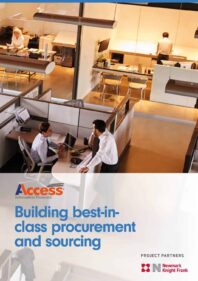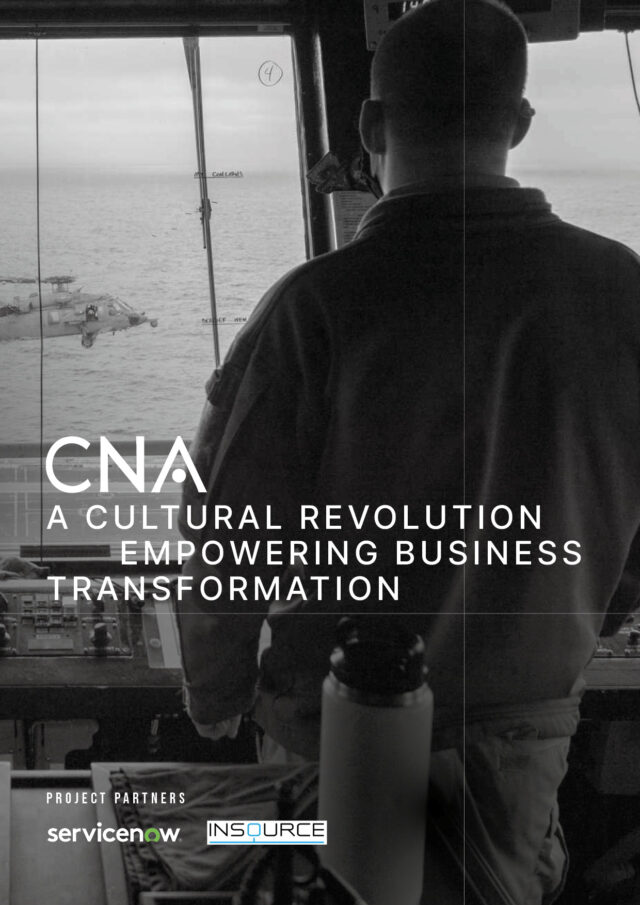Read the latest issue of Interface Magazine here!
With the world of sourcing, supply chain and procurement, undergoing significant sea change, it can often be forgotten that one of the biggest challenges any company investing and reinvesting in their sourcing functions faces is one that centers around legacy. After all, investing in new and disruptive means of working that are often entirely different from what has been the case for several successful decades can be seen as a risky pursuit. Why fix what isn’t broken? But for many, over the course of the last decade, there has been something of cultural awakening toward procurement and sourcing. No longer is the question around why, it’s more a question around what – what can we do to bring more value to our business and our business customers?
This is certainly the case for Bill Barry, Vice President of Procurement and Sourcing at Access, one of the fastest growing paper and digital document services and storage providers in the world. Barry, upon joining the company in 2018, was tasked with a vision of building out a best-in-class sourcing and procurement function, developing and implementing the policies and procedures in order to achieve that vision. Within a year and a half of this journey, Access has already begun to realize the benefits in terms of the value creation, savings and operational efficiencies that the sourcing and procurement group has brought to the business.
Over the past five years, Access has grown as a company largely through acquisition. Part of this growth has seen the company work to develop and build out all of its centralized corporate functions, including sourcing and procurement. “The company saw an opportunity to better leverage the collective spend of the organization and the scale had gotten to a point where it made sense to try to coordinate and centralize that,” explains Barry. “Both myself and leadership thought it was a great opportunity to leverage the skill set of relationship-building in sourcing out to the various locations of Access and work to build rapport and to gain the trust from each business unit and start to work hand in hand with procurement and sourcing.”

A
In order to embark on this journey, Barry stayed true to a philosophy he has held with him throughout his career. This philosophy is one of collaboration and support, in which he has often sought out opportunities in working environments where sourcing and procurement would not only have senior level support but the function was also seen as a trusted business partner. This he feels is what made the decision to work with Access something of a no-brainer, as the senior level support and the collaborative efforts throughout the organization made for a unique fit.
As with any journey, the first steps are often the hardest. Barry set out by taking simple steps and holding conversations with all senior managers across the various departments and functions of Access and asked them all the same questions. How are they learning from their business? How are they managing their departments? What are some of the pain points and areas of opportunity? “I also asked the business functions as to how they have dealt with making procurement decisions or purchasing decisions in the past” says Barry. “It was really a case of trying to get an understanding of what they, and by extension, the business, needed.” When Barry entered the business, he found himself in the unique position of not having a procure-to-pay solution in place and a very antiquated ‘as and when’ approach to sourcing and invoicing. “There was zero centralization of the function or even oversight of purchases. So, I started at the ground level and just tried to understand how each department was making those purchasing decisions and how they were doing it.”
From this, Barry consolidated all of the feedback and information and began building out a vision of a best-in-class sourcing and procurement organization and in turn developed a roadmap to get there. Working closely with the company’s CFO, Barry set about building out this journey in six-month stages. The first six months of this journey was a journey of discovery, focusing on understanding the business and most importantly, where procurement can drive true value. The next six months saw the development of the processing around how to act upon that, “bringing some good hygiene to the business”.
“By good hygiene, I mean that we can get better control over our spend and get the necessary policies and procedures we need to get us there,” says Barry. “As part of that, the next six months was about planning and communication, and then the following 12 to 18 months was focused on business integration and supplier management, while still remaining focused on communication and training, because at the same time, we ended up making a decision to roll out a procure to pay solution. To ensure it was successful, we were focused on communicating the change to the organization and training on the system.”

This approach enabled Access to break down this roadmap into ‘very simple math’ which allowed Barry to walk the business through his thorough process, taking on live feedback and making revisions and tweaks that were communicated to the business in order to maintain that position of a trusted business partner. Running alongside this was the implementation of a P2P solution that Barry feels was key in being able to show exactly what he was looking to achieve and what it would bring to the business as well as opening the door for the next stage of the journey. “The so-called second stage is actually more like the second roadmap. We’ve already laid down the groundwork and now we’re continuing to operationalize it, ingraining best practices and really looking at the spend to uncover where those additional areas of opportunity from a sourcing perspective are, versus what we were doing before.”
A journey like this, building a best-in-class sourcing organization from the ground up, will never be a cakewalk and challenges are inescapable. Not only will there be risks and unforeseen circumstances that can plague the journey, but there will also be the moving of goalposts. The end goals will evolve as the demands of the business evolve and this is where Barry’s philosophy comes into play.
“It’s highly important that you stay engaged in the business. Our business is one that’s grown through acquisition, so it was imperative that I was continually talking to the business because throughout this journey, we entered not just new markets but new countries. All of a sudden, we took a business that was US based and set out in creating procurement practices here in the US to take them to an international level,” explains Barry. “It changes so much. For example, our vendor management is completely different now because with us now operating across multiple countries we now must screen our vendors on a global scale across numerous databases and lists more than ever before and that adds new complexities into the process.”
“Had we not been constantly talking to the business we couldn’t put a solution in place that would have fulfilled the needs of a large segment of our business. You need to understand that you’re not going to solve every issue that revolves around a specific philosophy or even the goals you set in the beginning. But making sure you’re at least addressing the vast majority of them, in that you’re getting buy-in on the overarching goal – then you can manipulate the process underneath that’s going to drive you to that goal to account for those potential changes in your business.”

One of the core elements of the building out of Access’ procurement and sourcing function is to create one that can be defined as best-in-class. But what does best-in-class mean and more importantly, how can a company know it has achieved it? It is not uncommon across procurement functions all over the world to look to their peers and to tap into their vast supplier and vendor networks to benchmark against them in order to truly define what best-in-class means to their business. With Barry, it is no different. “Very early on in my career I would get together with a number of my peers: investors, VPs and Directors of procurement across a number of companies we worked with. And we’d meet regularly and bounce information off of one another,” says Barry. “Even today, time permitting, we’d speak regularly through emails and look at the policies we’ve been working on and get insight from one another.”
Barry also engages in documents published by a number of sources; the federal government, consulting organizations, etc, pertaining to their procurement and sourcing practices. Access works closely with consulting partners, not directly for consulting in the procurement space but rather their business insight. All of this comes together with an internal steering committee that will review any policy and procedure that’s drawn up before publishing. “Another philosophy I follow is; I know what I think is best-in-class, but if it doesn’t fit the needs of the business then it’s not best-in-class,” he says. “So again, it’s about feedback and engaging with the business and really listening to them. Only then can you become a best-in-class sourcing function.”
As Barry has recognized, the future will not be a simple straight line. There will be challenges, opportunity and evolution. The goals will change and the roadmap may evolve, but the approach must remain the same: to listen, to engage and to collaborate. ‘The future for any business will be defined by your willingness to continue to evolve as your business changes,” he says. “I mean, I’ve been here a year and a half and I don’t think there’s a policy out there still, that’s on version one. There are changes that we’re making to address new challenges or new opportunities.”
“But ultimately for me, and for Access, what we want is for that best-in-class approach to be ingrained in our philosophy and in our business that this is just how we do it. It’s no longer a case of ‘Oh, procurement’s making me do this.’ This is the way we do it. This is why we do it this way and this is way we’ll continue to do it.”









